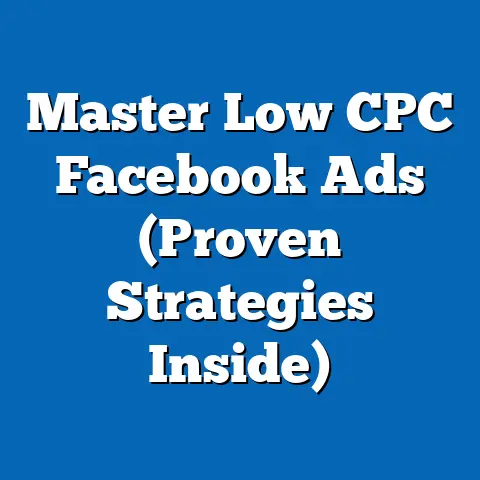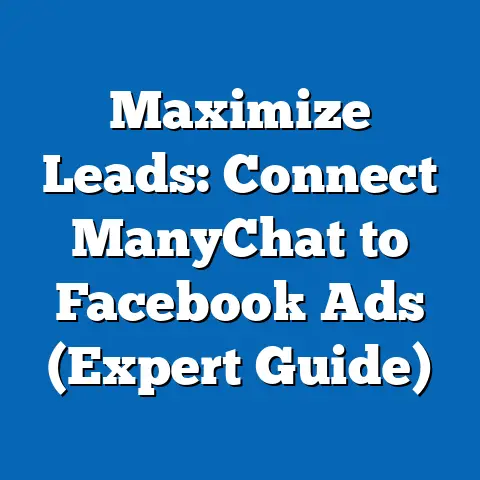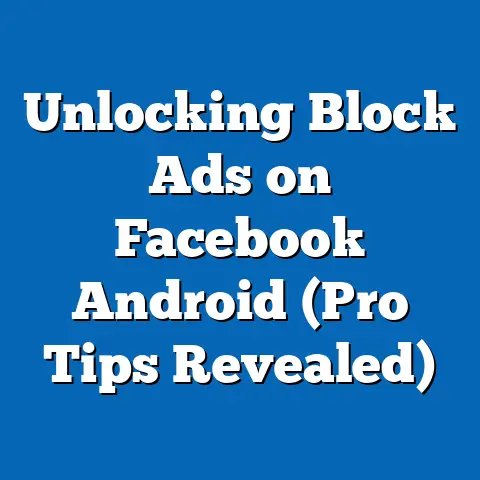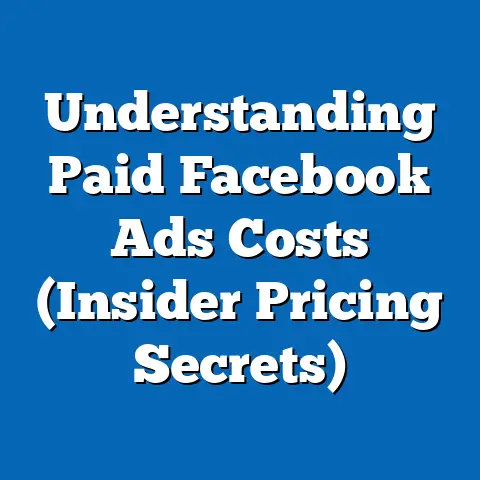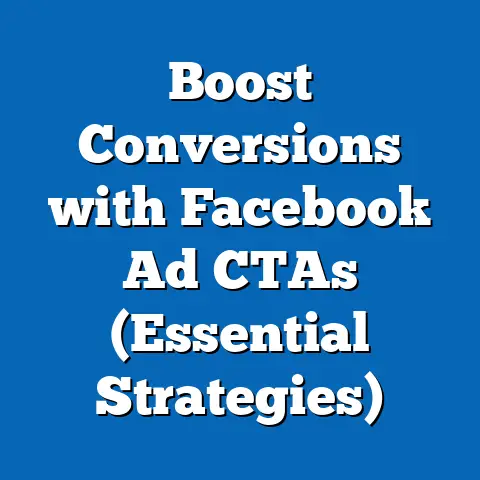Cheezburger Facebook Ads That Convert (Proven Strategies)
Have you ever been scrolling through Facebook and stopped dead in your tracks because of a hilarious meme ad? I know I have! It’s happened to me countless times. There’s something undeniably captivating about humor, especially when it’s cleverly integrated into advertising. Imagine for a moment, you’re scrolling through your feed, and you come across an ad featuring a quirky, meme-inspired cat photo paired with a clever caption that instantly makes you chuckle. You pause, intrigued, and before you know it, you’re clicking on the link, leading you to a website where you end up making a purchase. Now, envision the countless other Facebook users who share a similar experience – a simple, humorous ad turning casual browsers into loyal customers.
That’s the power of “Cheezburger-style” Facebook ads. In this article, I’m going to dive deep into the art and science of creating these ads – ads that not only entertain but also convert. I’ll share proven strategies that leverage humor, relatability, and effective targeting to achieve outstanding results. By the end, you’ll have a comprehensive understanding of how to craft ads that resonate with audiences and drive conversions. Get ready to unleash your inner meme lord and turn those laughs into leads!
The Power of Humor in Advertising
Humor is more than just a good time; it’s a powerful tool in advertising. I’ve seen firsthand how a well-placed joke can cut through the noise and grab attention in a way that a serious ad simply can’t.
The Psychology of Laughter and Buying
Think about the last time you genuinely laughed. It felt good, right? That’s because humor releases endorphins, creating a positive emotional association. When your audience associates your brand with positive emotions, they’re more likely to remember you and feel favorably towards your product or service.
- Enhances Brand Recall: A funny ad is more memorable than a bland one. People are more likely to talk about it and share it with their friends.
- Increases Engagement: Humor can break down barriers and make your brand feel more approachable and relatable.
- Reduces Skepticism: When you make people laugh, they’re less likely to be on their guard and more open to your message.
Examples of Successful Humorous Facebook Ads
Let’s look at some examples. Think back to the early days of the internet and the rise of Cheezburger.com. Their success was built on relatable, often silly, humor. Translating that to Facebook ads can be incredibly effective.
- Meme-Based Ads: Take a trending meme and adapt it to your product. For example, if you’re selling coffee, you could use the “Distracted Boyfriend” meme with the boyfriend being “Tired,” the girlfriend being “Regular Coffee,” and the distracted gaze landing on “Your Amazing Coffee.”
- Self-Deprecating Humor: Don’t be afraid to poke fun at yourself. Acknowledge a common problem your product solves with a humorous twist. I once saw an ad for a project management tool that showed a chaotic office with the caption, “Is your office this organized? We can help… probably.”
- Relatable Situations: Tap into everyday struggles that your audience can identify with. If you’re selling meal prep services, show a picture of a sad-looking microwave dinner with the caption, “Tired of this? We’ve got you covered!”
Tailoring Humor to Your Audience
The key is knowing your audience. What makes one group laugh might offend another. Research your target demographic and understand their sense of humor. Consider factors like age, location, interests, and even their preferred social media platforms.
Takeaway: Humor is a powerful tool, but it needs to be authentic and relevant to your audience. Don’t force it. If you’re not naturally funny, find someone who is!
Understanding Your Audience
You can’t create effective Cheezburger-style ads without a deep understanding of your audience. It’s like trying to tell a joke in a language you don’t speak – it’s not going to land!
The Importance of Audience Research
Audience research helps you understand:
- Their Interests: What do they care about? What memes do they share?
- Their Pain Points: What problems are they trying to solve?
- Their Language: How do they talk? What slang do they use?
- Their Sense of Humor: What makes them laugh? What do they find offensive?
Tools and Methods for Gathering Insights
Luckily, Facebook provides a wealth of tools to help you understand your audience.
- Facebook Audience Insights: This tool lets you explore the demographics, interests, and behaviors of people connected to your Facebook page or custom audiences. I’ve used this countless times to identify niche interests I never would have thought of on my own.
- Social Listening: Pay attention to what people are saying about your brand and your competitors on social media. Use tools like Mention or Brandwatch to track conversations and identify trends.
- Surveys and Polls: Ask your audience directly! Run polls on your Facebook page or send out surveys to your email list.
- Website Analytics: Analyze your website traffic to understand where your visitors are coming from and what they’re doing on your site.
Creating Audience Personas
Once you’ve gathered your data, create detailed audience personas. These are fictional representations of your ideal customers. Give them names, ages, occupations, hobbies, and even a favorite meme.
For example, you might have a persona named “Meme Master Michael,” a 25-year-old marketing professional who loves cats, coffee, and sharing funny content on social media.
Testing Different Audience Segments
Don’t assume you know everything about your audience. Continuously test different audience segments to see what resonates best. Run A/B tests with different targeting options and ad creatives.
Takeaway: Audience research is an ongoing process. Stay curious, keep testing, and never stop learning about your audience.
Crafting The Perfect Cheezburger-style Ad
Now that you know your audience, it’s time to create ads that will make them laugh and click. A successful Cheezburger-style ad is a delicate balance of humor, relevance, and a clear call to action.
The Anatomy of a Winning Ad
A winning Cheezburger-style ad consists of three key elements:
- Imagery: The visual element that grabs attention.
- Copy: The text that delivers the message and adds humor.
- Call to Action (CTA): The instruction that tells users what to do next.
Selecting the Right Meme Format
Choose a meme format that aligns with your brand message and target audience. Consider:
- Popularity: Is the meme currently trending?
- Relevance: Does it relate to your product or service?
- Versatility: Can you adapt it to fit your brand’s voice?
Some popular meme formats that work well for ads include:
- Drake Posting: Showcasing what your audience does and doesn’t like.
- Distracted Boyfriend: Highlighting a better alternative to a common problem.
- Woman Yelling at a Cat: Comparing two opposing ideas in a humorous way.
- Expanding Brain: Showing the evolution of a concept.
Writing Concise and Engaging Copy
Keep your copy short, sweet, and to the point. Remember, people are scrolling quickly, so you need to grab their attention in a matter of seconds.
- Use Humor: Inject your brand’s personality into your copy.
- Highlight Benefits: Focus on how your product or service solves a problem.
- Ask Questions: Engage your audience and encourage them to think.
- Use Emojis: Add visual flair and convey emotion.
The Importance of a Strong CTA
Your CTA is the final push that encourages users to take action. Make it clear, concise, and compelling.
- Use Action Verbs: “Shop Now,” “Learn More,” “Get Started.”
- Create Urgency: “Limited Time Offer,” “Sale Ends Soon.”
- Highlight Value: “Get Your Free Trial,” “Download Your Free Guide.”
Takeaway: A great Cheezburger-style ad is more than just a funny meme. It’s a strategic combination of visual appeal, witty copy, and a clear call to action.
Visual Elements That Captivate
In the fast-paced world of social media, visuals are king. They’re the first thing people see, and they can make or break your ad.
The Power of Visuals in Facebook Ads
Visuals can:
- Grab Attention: Stand out from the noise and stop the scroll.
- Convey Emotion: Evoke feelings and connect with your audience.
- Tell a Story: Communicate your brand’s message in a visual way.
- Drive Engagement: Encourage clicks, likes, and shares.
Best Practices for Selecting Images
When selecting images for your Cheezburger-style ads, consider the following:
- Relevance: Make sure the image is relevant to your brand and your message.
- Quality: Use high-resolution images that are clear and visually appealing.
- Color Psychology: Consider the emotional impact of different colors.
- Composition: Pay attention to the arrangement of elements in the image.
GIFs and Videos: Engaging Alternatives
Don’t limit yourself to static images. GIFs and videos can be even more engaging and attention-grabbing.
- GIFs: Use short, looping animations to add humor and visual interest.
- Videos: Create short, entertaining videos that tell a story or demonstrate your product.
Using Text Overlays Effectively
Text overlays can be a great way to add context and humor to your visuals, but be careful not to overdo it.
Targeting and Retargeting Strategies
You can have the funniest, most visually appealing ad in the world, but if you’re showing it to the wrong people, it’s not going to convert. That’s where targeting comes in.
Understanding Facebook’s Targeting Options
Facebook offers a wide range of targeting options to help you reach the right audience.
- Demographic Targeting: Target users based on age, gender, location, education, and other demographic factors.
- Interest-Based Targeting: Target users based on their interests, hobbies, and activities.
- Behavioral Targeting: Target users based on their online behavior, such as purchase history and website visits.
- Custom Audiences: Upload your own customer data to create targeted audiences.
- Lookalike Audiences: Create audiences that are similar to your existing customers.
The Power of Retargeting
Retargeting is the process of showing ads to people who have previously interacted with your brand. This can be a highly effective way to re-engage users and drive conversions.
For example, you can retarget users who:
- Visited your website
- Viewed a specific product page
- Added an item to their cart but didn’t complete the purchase
- Watched a video on your Facebook page
Expanding Reach with Lookalike Audiences
Lookalike audiences allow you to reach new people who are similar to your existing customers. This can be a great way to expand your reach while maintaining relevance.
Facebook uses its algorithm to identify users who share similar demographics, interests, and behaviors with your existing customers.
Case Studies of Successful Retargeting Campaigns
I’ve seen some incredible results with retargeting campaigns. For example, one of my clients, an e-commerce store selling funny t-shirts, saw a 300% increase in conversions after implementing a retargeting campaign that showed ads to users who had viewed specific t-shirt designs.
Another client, a local brewery, used retargeting to show ads to people who had visited their website, reminding them about upcoming events and new beer releases. This resulted in a significant increase in foot traffic to their brewery.
Takeaway: Targeting is crucial for the success of your Cheezburger-style ads. Use Facebook’s targeting options to reach the right audience, and leverage retargeting to re-engage users who have already shown interest in your brand.
Analyzing and Optimizing Ad Performance
Creating great ads and targeting the right audience is only half the battle. You also need to track your ad performance and make adjustments to improve your results.
Key Performance Metrics to Track
Here are some key performance metrics to track for your Facebook ads:
- Click-Through Rate (CTR): The percentage of people who click on your ad after seeing it.
- Conversion Rate: The percentage of people who take a desired action (e.g., make a purchase, sign up for a newsletter) after clicking on your ad.
- Cost Per Click (CPC): The average cost you pay for each click on your ad.
- Cost Per Acquisition (CPA): The average cost you pay for each conversion.
- Return on Ad Spend (ROAS): The amount of revenue you generate for every dollar you spend on advertising.
A/B Testing for Optimal Results
A/B testing is the process of comparing two versions of an ad to see which one performs better. This is a crucial part of optimizing your ad performance.
Test different elements of your ads, such as:
- Imagery: Test different images, GIFs, and videos.
- Copy: Test different headlines, descriptions, and CTAs.
- Targeting: Test different audience segments.
- Placement: Test different ad placements (e.g., Facebook News Feed, Instagram Feed).
Interpreting Data and Making Adjustments
Once you’ve gathered enough data, analyze your results and make adjustments to improve your ad performance.
- Identify Winning Ads: Focus on the ads that are performing well and scale them up.
- Eliminate Underperforming Ads: Pause or delete the ads that are not performing well.
- Refine Your Targeting: Adjust your targeting options to reach a more relevant audience.
- Optimize Your Bids: Adjust your bids to get the most out of your budget.
Examples of Successful Ad Optimization
I worked with a client who was running Facebook ads for a new mobile app. Their initial ads had a low CTR and a high CPA. After analyzing the data, we realized that their ads were not resonating with their target audience.
We decided to A/B test different ad creatives and targeting options. After a few weeks of testing, we found a winning combination of ad creative and targeting that resulted in a 50% increase in CTR and a 30% decrease in CPA.
Takeaway: Analyzing and optimizing your ad performance is an ongoing process. Stay data-driven, keep testing, and never stop looking for ways to improve your results.
The Future of Cheezburger-style Facebook Ads
Humor in advertising isn’t a fad; it’s a fundamental aspect of human connection. As long as people enjoy laughing and sharing funny content, Cheezburger-style Facebook ads will continue to be a powerful tool for marketers.
Key Strategies for Success
To succeed with Cheezburger-style Facebook ads, remember these key strategies:
- Know Your Audience: Understand their sense of humor and what resonates with them.
- Be Authentic: Don’t force the humor. Let your brand’s personality shine through.
- Use High-Quality Visuals: Choose images, GIFs, and videos that are visually appealing and relevant.
- Write Concise and Engaging Copy: Keep your copy short, sweet, and to the point.
- Test and Optimize: Continuously track your ad performance and make adjustments to improve your results.
Embrace Creativity and Experimentation
The world of memes is constantly evolving, so don’t be afraid to experiment with new formats and ideas. Stay up-to-date on the latest trends and find creative ways to incorporate them into your ads.
The Ongoing Relevance of Humor
In a world that can often feel overwhelming and stressful, humor provides a much-needed escape. By making people laugh, you can create a positive association with your brand and build lasting relationships with your audience.
I encourage you to experiment with your own Cheezburger-style ads while continuously analyzing performance and audience feedback to refine your approach. Remember that the key to success lies in creativity, understanding your audience, and embracing the unique charm of humor in advertising. So go forth, meme lords, and turn those laughs into leads!

